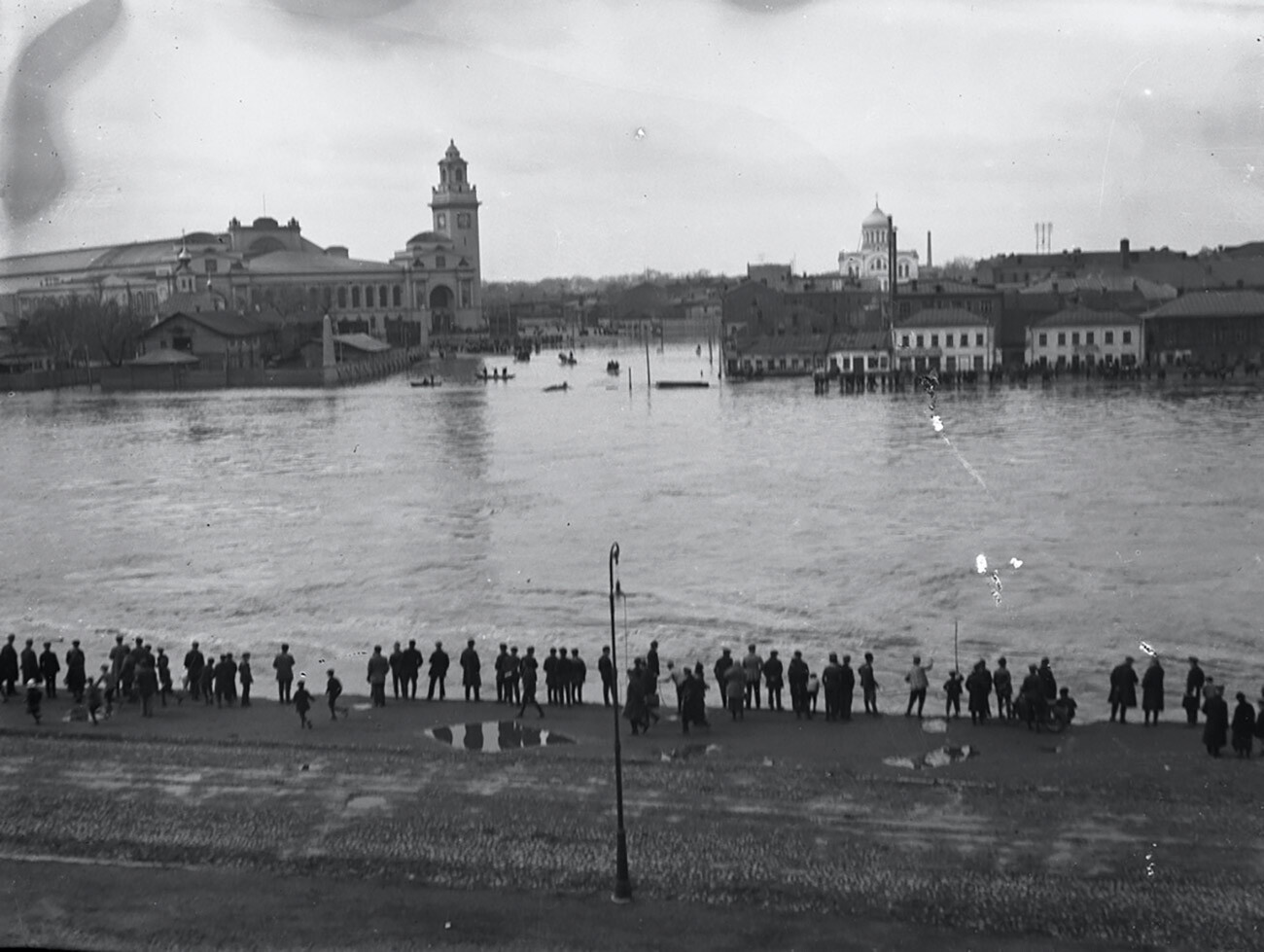

The earliest mentions of flooding in Moscow date back to 15th-century manuscripts. A sudden rise in water levels would be described by Russians using the antiquated term “velikaya pavod’” – literally “great flood”. Ancient ‘journalists’, chronicling the natural disaster would write: “Yakozhe i ne byvala inta takova,” which would barely be understandable to a modern Russian-speaker and roughly means: “This never happened before, yet, here it is again.”
In order for the traditional spring floods to pose less of a threat to Moscow, the decision was made to construct a water drainage system. The first order of business was creating the Neglinka channel, stretching from the Borovitskaya Tower to the Moscow River; this was followed by artificial ponds and dams.
However, these measures would not always prove useful: rampant rainfall during the 16th century would frequently turn the Russian capital into Venice. In the Fall of 1551, when snowfall had already arrived and the rivers began to ice over, strong rains had raised the water level to usual spring levels. In early Winter of 1564, sudden prolonged rainstorms lasting until Christmas forced Muscovites to move about the city in boats!

In the Spring of 1655, instead of being jubilant at the arrival of Easter, Moscow residents were busy trying to save their property. The flood literally turned rivers into aggressive currents, removing every obstacle in their path. Wooden houses were torn apart like toys under all that pressure, while whole trees were uprooted. The flow even reached the Kremlin, which stood elevated over the carnage – however, its stone walls slowly succumbing and desperately creaking before finally giving way.
The Nemetskaya Sloboda district (present-day Baumanskaya subway station area) was almost entirely submerged in 1702: A sudden thaw resulted in all ice and snow melting in just a single night. Once again, Moscow’s inhabitants had to resort to boats or horses – the latter requiring extra care: water levels had risen by more than a meter, so the riders’ feet were often themselves submerged in the water!
The floods, which struck several times a year, caused great damage to the city. The Bolshoy Kamenny Bridge beneath the Kremlin walls – with its little stalls, mills and taverns – often fell victim: three of its arches were completely taken out by the rising waters in 1783, with 11 stalls collapsing into the river, their debris killing two women washing clothes by the water, as well as a fisherman and a passerby.
The disasters, which often occurred in the capital, forced Russians to look for a technical solution to siphon off the water and protect citizens. That’s how the city got the Vodootvodny (literally - ‘draining’) channel, which protected the famous Ostozhenka and Yakimanka streets from flooding.

Meanwhile, the Moscow River continued delivering unpleasant surprises. In 1823, for two whole days, water levels sat at almost 8.5 meters, flooding the Kremlevsky (present-day Aleksandrovsky) Garden. Basements and ground floors of nearby buildings turned into aquariums, while horse carriages had to be, once again, swapped out for row boats.

The most severe flood took place in 1908, when Moscow River waters rose to 8.9 meters. The ‘Russkoe Slovo’ newspaper then wrote: “The entire square between [the river] and the Vodootvodny channel presents an interesting scene, full of incredible beauty. Especially beautiful was the scene between the Moskvoretsky and Kamenny bridges. On one side, one could glimpse the sinking Kremlin walls, brightly illuminated by both bridges’ electrical lighting, while, on the other, the water reflected the beautiful buildings and mansions of Sofiyskaya Embankment.”

Water levels at the Kremlin walls remained at 2.3 meters, with Bolotny Island completely submerged, as well as most of the Zamoskvorechye, Dorogomilovo and Luzhniki areas.

There was an entire sea downtown, which swallowed up smaller buildings. Knotted ropes would be lowered from bridges to hoist drowning people back to safety. Train services stopped altogether, as power outages became commonplace: Moscow was enveloped in darkness.


The 20th century saw Moscow flooded several more times. In 1926 – again, during Easter, Zamoskvorechye and Khamovniki districts went under again, with water levels rising to 7,3 meters and staying that way for several days. The last flood of such magnitude took place in 1931. Thankfully, things have been under control ever since.

Dear readers,
Our website and social media accounts are under threat of being restricted or banned, due to the current circumstances. So, to keep up with our latest content, simply do the following:
If using any of Russia Beyond's content, partly or in full, always provide an active hyperlink to the original material.
Subscribe
to our newsletter!
Get the week's best stories straight to your inbox